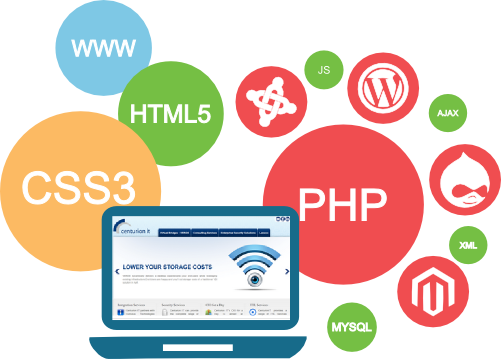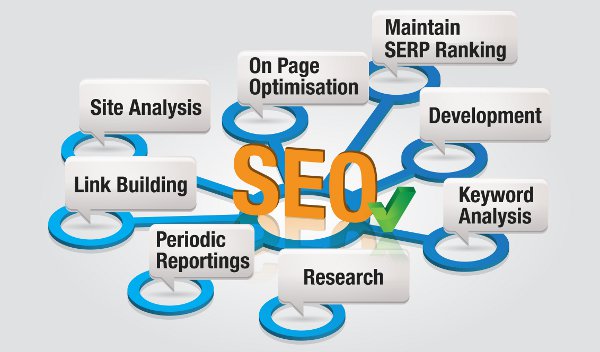Andriod Apps Delevopment
Android is a mobile operating system (OS) based on the Linux kernel and currently developed by Google.
With a user interface based on direct manipulation, Android is designed primarily for touchscreen mobile devices such as
smartphones and tablet computers, with specialized user interfaces for televisions (Android TV), cars (Android Auto), and wrist watches
(Android Wear). The OS uses touch inputs that loosely correspond to real-world actions, like swiping, tapping, pinching, and reverse pinching
to manipulate on-screen objects, and a virtual keyboard. Despite being primarily designed for touchscreen input, it has also been used in game
consoles, digital cameras, regular PCs, and other electronics. As of 2015, Android has the largest installed base of all general-purpose operating systems.
Android is popular with technology companies which require a ready-made, low-cost and customizable operating system for high-tech devices.
Android's open nature has encouraged a large community of developers and enthusiasts to use the open-source code as a foundation for community-driven projects,
which add new features for advanced users[18] or bring Android to devices which were officially released running other operating systems.
The operating system's success has made it a target for patent litigation as part of the so-called "smartphone wars" between technology companies.
Understanding Mobile Apps
- What is Mobile Apps
- Understanding .NET Assemblies
- Different Kinds of Mobile Apps
- Android Intro
Understanding Android
- History Behind Android Development
- Why we need Android Apps?
- What you should know to learn Android
- Java and Android
Workig With C#
- Using C# in your program.
- Define Namespaces
- Data Types in C#
- Variables and Constants
- Value Types versus Reference Types
- Operators and Expressions
- Understanding Type Conversions
- Using Console I/O
- Formatting Numbers, Date and Times
Loop and condition
- Writing program with If/Else
- Switch Case
- while and do/while, for loop and for each
Working with functions
- What is Static and Instance Functions
- Parameters by value and by reference
- Function Overloading
- Optional Parameters
- Using Variable Length Parameter Lists
- Arrays
- What is System Array
- Working with ArrayLists and Hashtables
- .NET Collections
- Working with Lists and Dictionaries
Object-Oriented Programming
- Understanding OOPs
- What is class and objects
- Understanding Inheritance
- Defining and Using Classes in ASP.NET
- Understanding the Role of Interfaces in .NET
Introducing ASP.NET
- Overview of ASP.NET 4.0
- Client-Side vs. Server-Side Execution
- Using Web Forms
- ASP.NET Application Folders
- Understanding Web.config
ASP.NET web Pages
- Creating ASP.NET Pages
- Understanding Code-Behind Model
- Understanding the Life-cycle of a Web Form
- Page Events Handling
Using Controls
- HTML Controls
- Web Controls
- Controls at Runtime
- Defining and Using Custom User Controls
Handling Events
- What is Event Driven Programming Model
- Understanding Event Handlers
- What is PostBack & Non-PostBack Events
- Using Proxies
- Sharing Event Handlers between Events
- Using Global.asax
Validation
- What is ASP.NET Validation Controls
- Client-Side Validation
- Server-Side Validation
- Regular Expression Validator
- Customizing Validation
- Working with Validation Groups
Creating and using Master Pages
- Master Page Architecture
- Designing a Master Page
- Designing Content Pages
Maintaining State
- Maintaining State within ASP.NET Applications
- Using the Application Object
- Using the Session Object
- Using the ViewState Object
- Reading and Writing Cookies
- Using the Query String
ADO.NET
- Understanding the ADO.NET Object Model
- Connected vs. Disconnected Access
- Using a Connection to Connect to a Data Source
- Execute Queries and Stored Procedures
- DataReader to Work with Cursors
- DataSet with Disconnected Data
- Using DataAdapters with DataSets
Using XML
- Understanding XML and XML Schemas
- Reading XML Data with a DataSet
- Writing XML Data with a DataSet
Data Binding
- Examining ASP.NET Data Bound Controls
- Connected vs. Disconnected Access
- Using the ListBox Control
- Using the GridView Control
- Using the DetailsView Control
- Using the FormView Control
ASP.NET Applications Security
- Understanding the ASP.NET 4.0 Security Models
- Authenticating Users
- Authorization User Requests
- Using the ASP.NET Login Controls
- Using the ASP.NET Web Site Administration Tool
Introduction to Web Services
- Overview of Web Services
- Creating a Web Service
- Using WSDL and Proxy Classes
- Consuming a Web Service
Deploying ASP.NET Applications
- Overview of ASP.NET Deployment Options
- Using Copy Web Site Tool
- Using Publish Web Site Tool
- Using Web Setup Projects
Conceptual Overview about Ajax Technology
- Using Asp.net Ajax Control Toolkits
- Using Server Side Asp.Net Ajax
- Using Client Side Asp.Net Ajax
- Client-Side JavaScript programming
- Microsoft Client Library for Ajax
- Remote method calls with ASP.NET Ajax
LINQ AND C#
- Generics, Delegates, Anonymous Methods, Enumerartors&Yeild
- Local Type Interface, Lamda Expressions
- Extension Methods, Object Initialization Expressions
- Anonymous Types, Query Expressions
- LINQ Queries
- Query Operators
- Operators
- LINQ to SQL, DataSet, Entities
- LINQ to XML API
- LINQ to XML Queries
WCF (Windows Communication Foundation)
- Architecture of WCF
- Project Template of WCF
- WCF Composition
- Building a WCF Service
- LINQ Queries
- Hosting a WCF Service


